Geoffroy Lerosey
Empirical Validation of the Impedance-Based RIS Channel Model in an Indoor Scattering Environment
Dec 01, 2023Abstract:Ensuring the precision of channel modeling plays a pivotal role in the development of wireless communication systems, and this requirement remains a persistent challenge within the realm of networks supported by Reconfigurable Intelligent Surfaces (RIS). Achieving a comprehensive and reliable understanding of channel behavior in RIS-aided networks is an ongoing and complex issue that demands further exploration. In this paper, we empirically validate a recently-proposed impedance-based RIS channel model that accounts for the mutual coupling at the antenna array and precisely models the presence of scattering objects within the environment as a discrete array of loaded dipoles. To this end, we exploit real-life channel measurements collected in an office environment to demonstrate the validity of such a model and its applicability in a practical scenario. Finally, we provide numerical results demonstrating that designing the RIS configuration based upon such model leads to superior performance as compared to reference schemes.
Model-free Optimization and Experimental Validation of RIS-assisted Wireless Communications under Rich Multipath Fading
Feb 21, 2023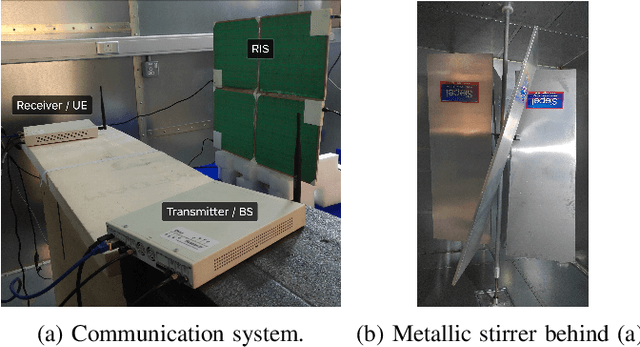
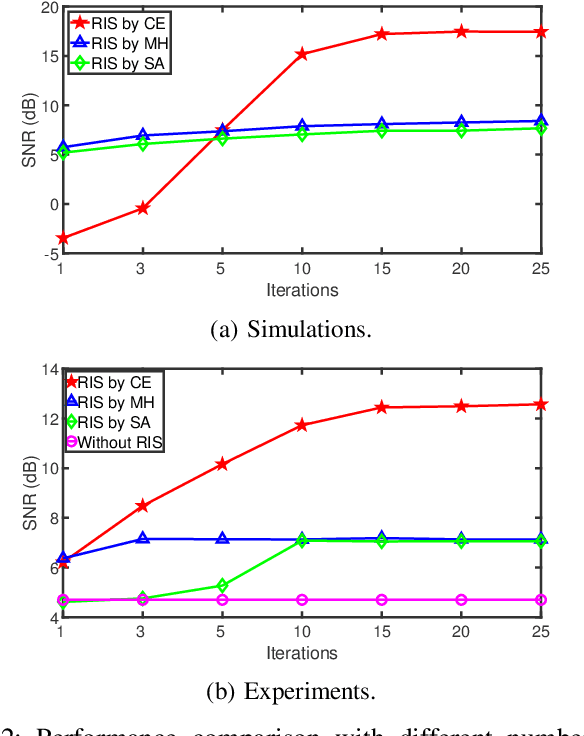
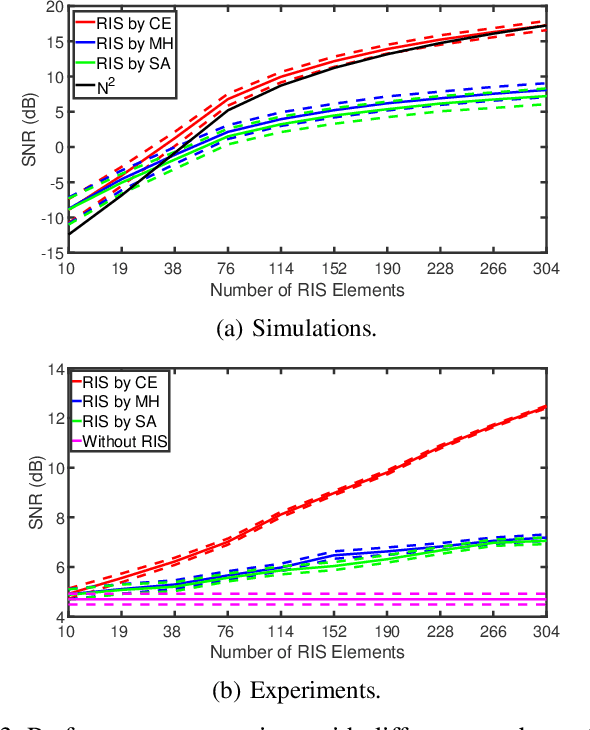
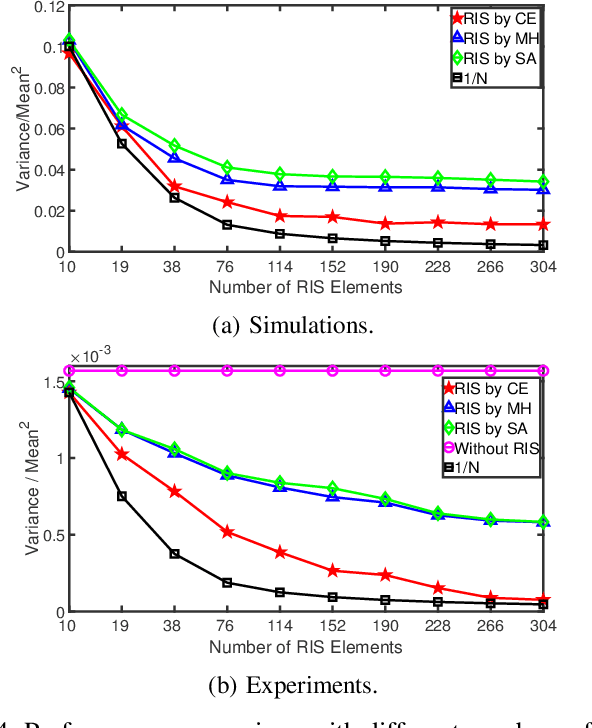
Abstract:Reconfigurable intelligent surface (RIS) devices have emerged as an effective way to control the propagation channels for enhancing the end users' performance. However, RIS optimization involves configuring the radio frequency (RF) response of a large number of radiating elements, which is challenging in real-world applications due to high computational complexity. In this paper, a model-free cross-entropy (CE) algorithm is proposed to optimize the binary RIS configuration for improving the signal-to-noise ratio (SNR) at the receiver. One key advantage of the proposed method is that it only needs system performance parameters, e.g., the received SNR, without the need for channel models or channel estimation. Both simulations and experiments are conducted to evaluate the performance of the proposed CE algorithm. The results demonstrate that the CE algorithm outperforms benchmark algorithms, and shows stronger channel hardening with increasing numbers of RIS elements.
Multi-path fading and interference mitigation with Reconfigurable Intelligent Surfaces
Jun 16, 2022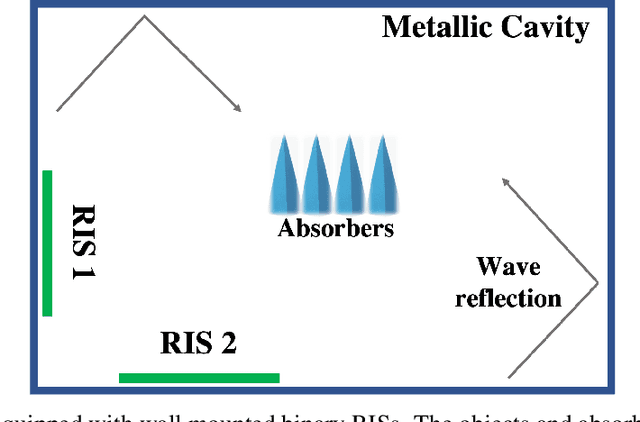

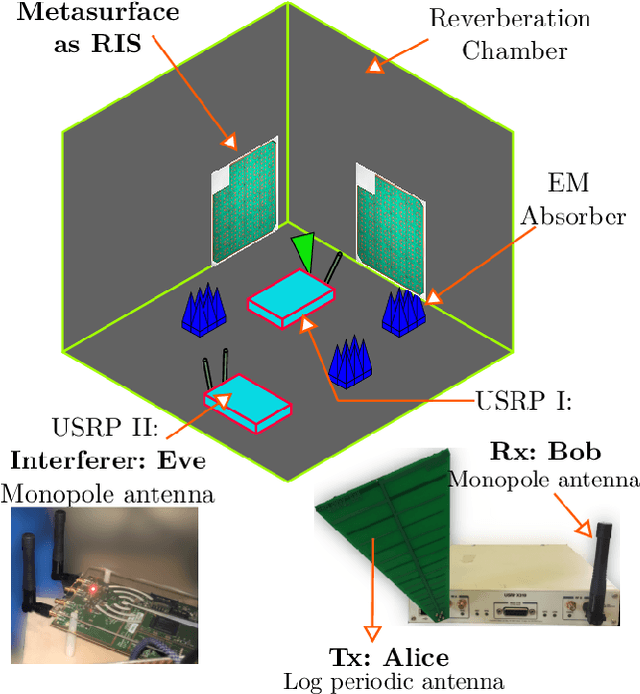
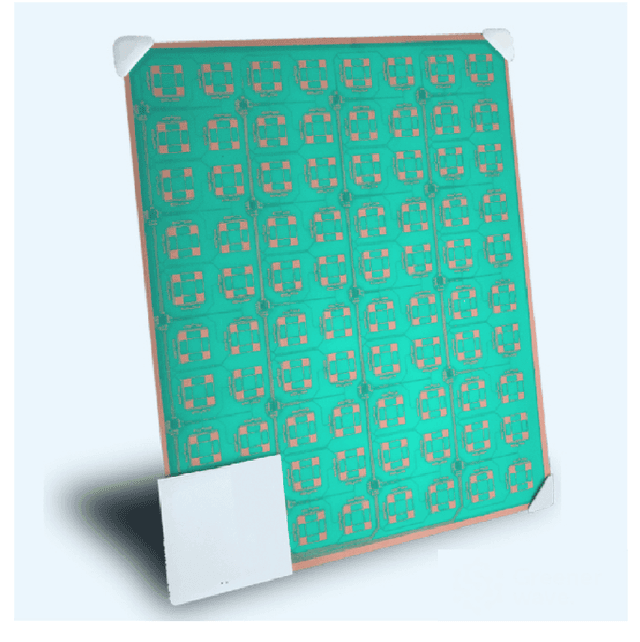
Abstract:We exploit multi-path fading propagation to improve both the signal-to-interference-plus-noise-ratio and the stability of wireless communications within electromagnetic environments that support rich multipath propagation. Quasi-passive propagation control with multiple binary reconfigurable intelligent surfaces is adopted to control the stationary waves supported by a metallic cavity hosting a software-defined radio link. Results are demonstrated in terms of the error vector magnitude minimization of a quadrature phase-shift modulation scheme under no-line-of-sight conditions. It is found that the magnitude of fluctuation of received symbols is reduced to a stable constellation by increasing the number of individual surfaces, or elements, thus demonstrating channel hardening. By using a second software-defined radio device as a jammer, we demonstrate the ability of the RIS to mitigate the co-channel interference by channel hardening. Results are of particular interest in smart radio environments for mobile network architectures beyond 5G.
Experimental Evaluation of Multi-operator RIS-assisted Links in Indoor Environment
Jun 15, 2022

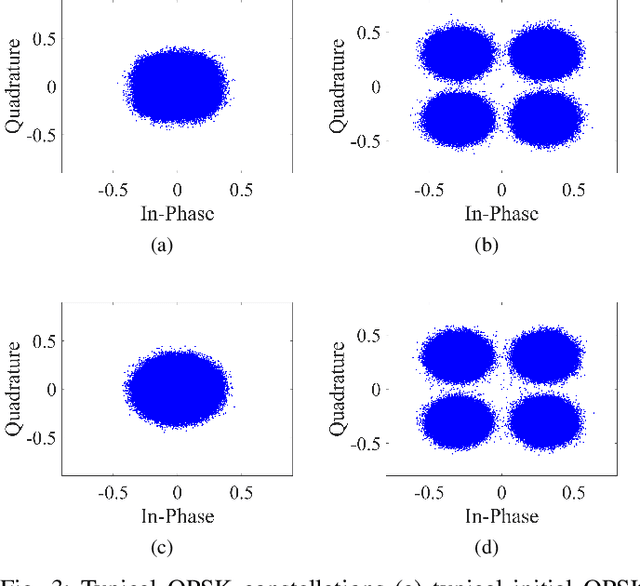

Abstract:In this work, we present reconfigurable intelligent surface (RIS)-assisted optimization of the multiple links in the same indoor environment. Multiple RISs from different operators can co-exists and handle independent robust communication links in the same indoor environment. We investigated the key performance metrics with the help of two simultaneously operating RIS-empowered robust communication links at different center frequencies in the same indoor environment. We found with the help of bit error rate (BER) and error vector magnitude (EVM) measurements that two operators can co-exist in the same RF environment without seriously impacting quality of service of users.
 Add to Chrome
Add to Chrome Add to Firefox
Add to Firefox Add to Edge
Add to Edge